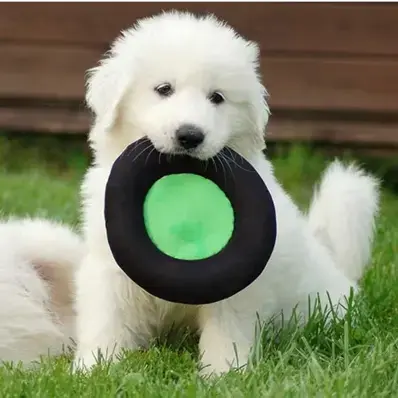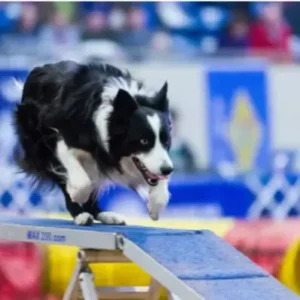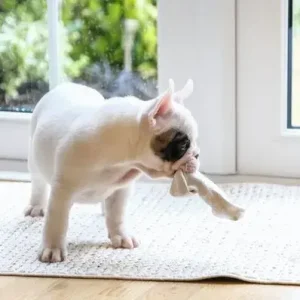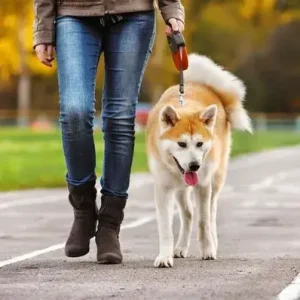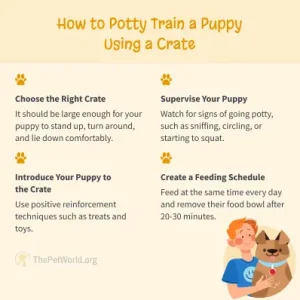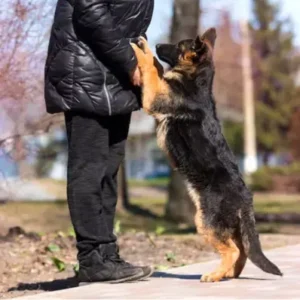Essential Puppy Training Tips
Training a puppy takes effort, but it’s essential for good behavior. Start early, stay consistent, and use positive reinforcement. No matter the dog breed, these steps will help you raise a happy pup.
Here are some essential tips:
- Consistency: Puppies thrive on routine. Always use the same commands and reinforce them regularly.
- Positive Reinforcement: Use treats, praise, and affection to reward your puppy for good behavior. This makes learning fun!
- Short Sessions: Keep training sessions brief—5 to 10 minutes at a time. Puppies have short attention spans, so frequent, short bursts of training are more effective than long sessions.
- Patience: Puppies are learning and growing, so be patient as they absorb new information. Mistakes will happen, but they are part of the learning process.
Basic Commands Every Puppy Should Learn
Teaching your puppy essential commands is key to managing their behavior and creating a harmonious environment at home.
Here are the basic commands every puppy should learn:
- Sit: A basic but important command that helps your puppy stay calm.
- Stay: Trains your puppy to stay in place, which helps control their behavior.
- Come: Essential for recall. Your puppy must come when called for their safety.
- Leave It: Prevents your puppy from picking up harmful or undesirable items.
- Heel: Helps prevent pulling on the leash, making walks more enjoyable for both you and your puppy.
Puppy Training Milestones by Age
As your puppy grows, their training needs will evolve.
Here’s what to expect at different ages:
- 8 to 10 Weeks: Start potty training and socializing your puppy. Introduce basic commands like “sit” and “stay.”
- 10 to 12 Weeks: Reinforce basic commands, begin leash training, and continue socializing in different environments.
- 12 to 16 Weeks: Your puppy will be ready for longer training sessions. Focus on leash manners and advanced commands like “leave it” and “come.”
- 16 to 20 Weeks: Start addressing behavior problems like biting, jumping, or chewing. Continue with advanced commands and leash training.
- 6 Months: Your puppy may test boundaries. Reinforce established behaviors and focus on consistency with training.
- 12 to 18 Months: By this age, your puppy should have mastered basic commands. Continue reinforcing good habits and address any emerging behavioral issues.
House Training Your Puppy
House training your dog can take time, but with consistency, your puppy will catch on.
Here’s how to house-train your puppy:
- Create a Potty Schedule: Take your puppy outside at regular intervals, especially after meals, naps, and playtime.
- Crate Training: Crate training your dog is an effective method for housebreaking. Puppies instinctively avoid soiling their sleeping area, so crates help reinforce housebreaking habits.
- Accidents Happen: Don’t punish your puppy for accidents. Instead, focus on potty training your dog by cleaning up messes promptly and taking them outside to reinforce proper behavior.
Socializing Your Puppy
Socialization is a key part of puppy training. Exposing your puppy to different people, animals, and environments at an early age helps them develop into a confident adult dog.
Here’s how to socialize your puppy:
- Introduce New People: Expose your puppy to a variety of people, including children and adults, to help them feel comfortable around different types of individuals.
- Expose to Other Pets: Socializing with other dogs and animals helps your puppy learn how to interact with others.
- Different Environments: Take your puppy to different environments, such as parks, pet stores, or busy streets, so they become familiar with various sights and sounds.
- Stay Positive: Always make socialization experiences positive. If your puppy has a negative experience, it can hinder their social development.
Leash Training for Puppies
Leash training your dog is one of the most important skills. It helps establish control during walks and ensures your puppy behaves well on a leash.
Here’s how to start:
- Introduce the Leash: Start by getting your puppy used to wearing a collar or harness and a leash. Let them walk around the house with it for a few minutes each day.
- Practice Walking: Once your puppy is comfortable with the leash, take them outside for short walks. Reward them when they walk calmly by your side.
- Address Pulling: If your puppy pulls on the leash, stop walking until they return to your side. This teaches them that pulling doesn’t get them anywhere.
Managing Common Puppy Behavior Issues
As your puppy grows, they may exhibit some common behavior issues.
Here’s how to address them:
- Biting: Puppies often bite or nip while playing. Focus on training your dog not to bite by redirecting them to chew toys and using a firm “no” to discourage biting behavior.
- Jumping: Teach your puppy not to jump on people by rewarding them for staying on the ground and using a firm “off” command.
- Chewing: Provide your puppy with plenty of chew toys to prevent them from chewing on furniture or other inappropriate objects.
- Barking: It can be controlled by training your dog not to bark. Teach the “quiet” command and identify the cause, whether it’s boredom, anxiety, or excitement.
Common Puppy Training Mistakes to Avoid
To make your puppy’s training as effective as possible, avoid these common mistakes:
- Inconsistency: Use the same commands and rules consistently to avoid confusing your puppy.
- Expecting Too Much: Puppies learn at their own pace. Don’t rush the process—be patient and take it one step at a time.
- Punishment: Focus on positive reinforcement instead of punishment. Puppies respond better to rewards than reprimands.
- Neglecting Socialization: Make sure to expose your puppy to various people, pets, and environments to help them become well-rounded.
Training your puppy takes time and effort, but the rewards are well worth it. By starting early, being consistent, and using positive reinforcement, you’ll raise a well-behaved, happy puppy.

